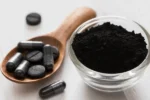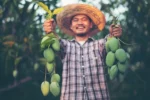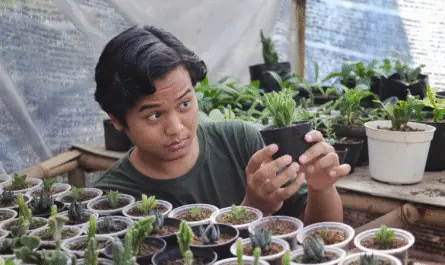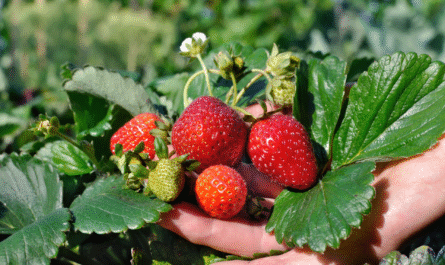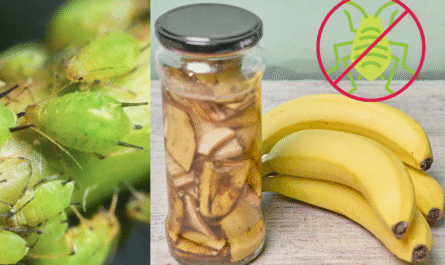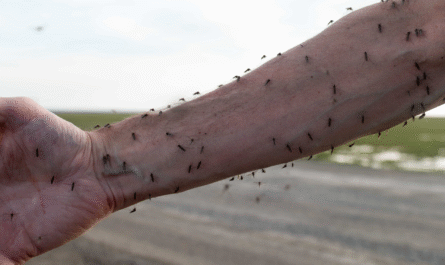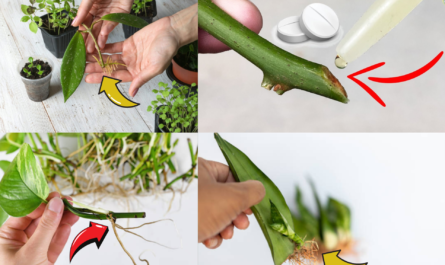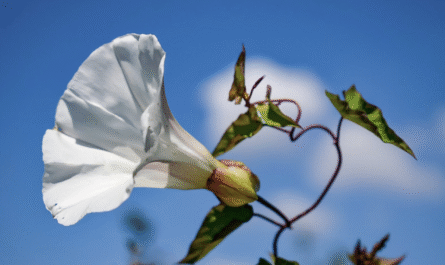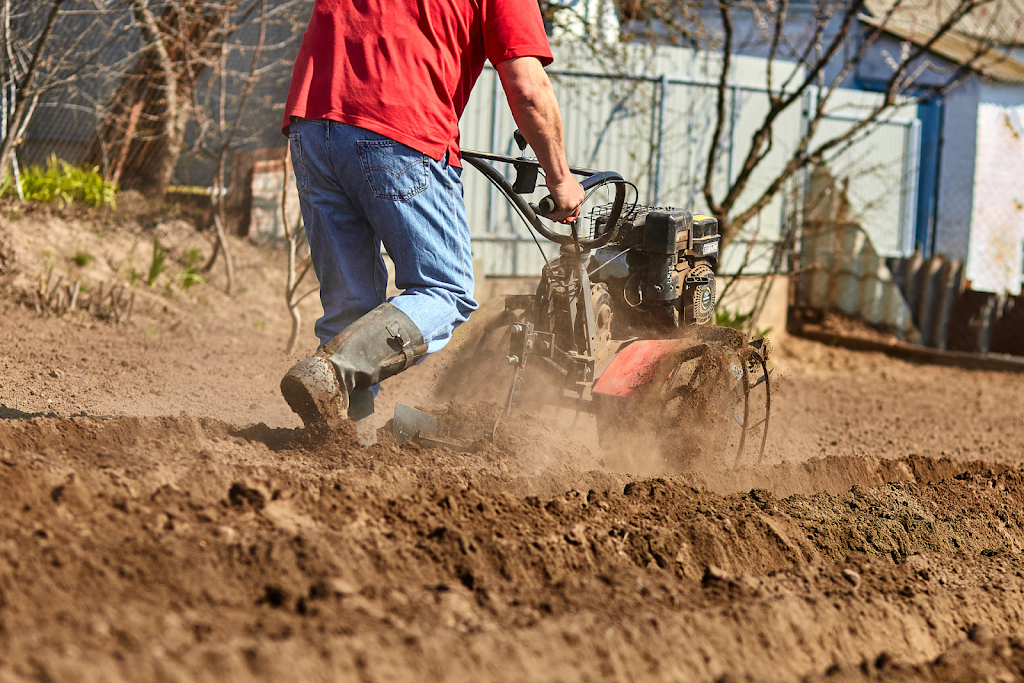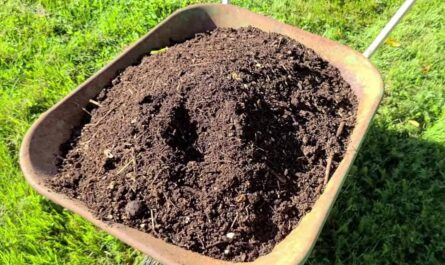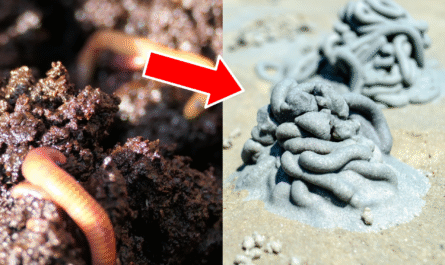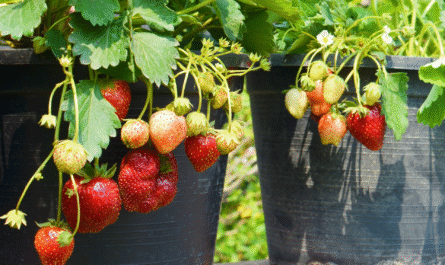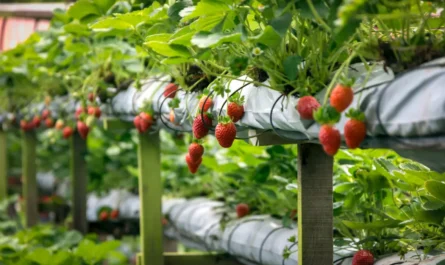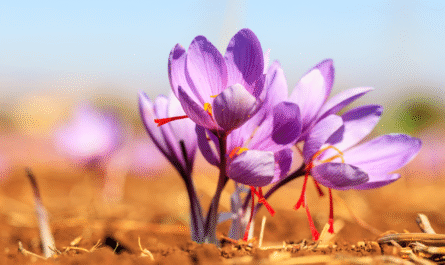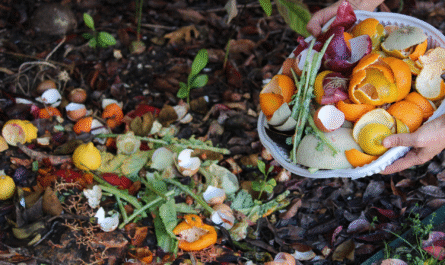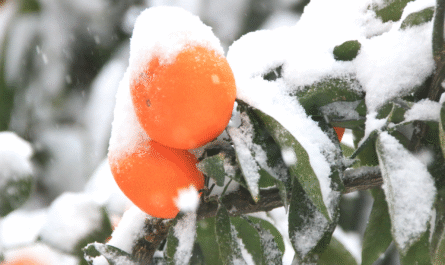Growing fruit trees doesn’t require a large backyard or a full orchard. As an agronomist myself, I often recommend container gardening to urban dwellers, apartment dwellers, or anyone with limited space. With the right care, you can enjoy a lush, productive mini-orchard right on your balcony, patio, or rooftop.
Here are 10 fast-growing fruit trees that thrive in pots and containers, along with my expert tips to help you get the most out of each one.
1. Fig (Ficus carica)
Figs grow fast, fruit early, and thrive in containers. I suggest varieties like ‘Brown Turkey’ or ‘Celeste’ for potted growth. They prefer full sun and well-draining soil. Prune annually to manage size and promote fruiting. In the right conditions, you could harvest within the first year.
Fig trees adapt surprisingly well to pot life. Their root systems are naturally shallow, which makes them less dependent on deep soil layers. As long as you provide a large enough container (at least 15 gallons), they will establish quickly. These trees are self-pollinating, so you only need one to start getting fruit.
When growing figs in containers, it’s crucial to maintain consistent moisture without waterlogging. I always mulch the topsoil to reduce evaporation and help retain soil temperature. Keep an eye out for pests like spider mites or rust. Regular pruning helps manage their height and encourages more lateral branches for fruiting.
Also Read: Top 8 Companion Plants to Grow Beside Apple Trees for a Thriving, Pest-Free Harvest
2. Dwarf Banana (Musa spp.)
Dwarf bananas are perfect for tropical vibes and quick fruit. Varieties like ‘Dwarf Cavendish’ or ‘Super Dwarf’ grow well in 15-20 gallon containers. They love heat, humidity, and full sun.
Banana plants are technically giant herbs, not trees, but they produce fruit rapidly when well cared for. They grow from a central corm and send out suckers, which you can divide and repot to propagate more plants. Most dwarf varieties reach about 5-8 feet in height, manageable for patios or greenhouses.
One key to success with bananas in pots is feeding. These are heavy feeders and need plenty of nutrients to grow those large, lush leaves and support fruit production. Use a high-potassium fertilizer, and make sure the pot drains well to avoid root rot. Keep them warm during colder months, as they are frost-sensitive.
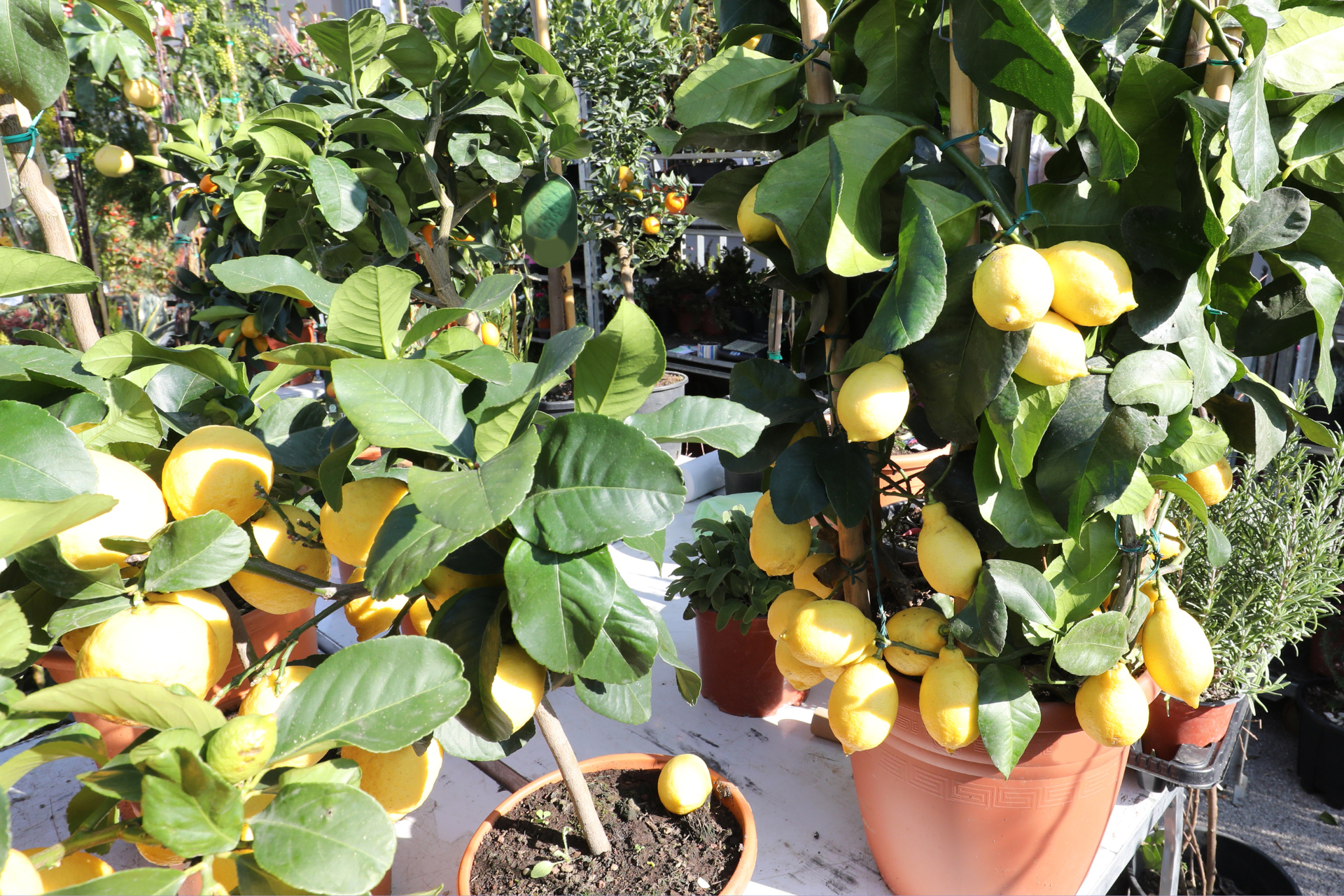
3. Lemon (Citrus limon)
Lemon trees, especially ‘Improved Meyer’, are among my favorites for pots. They grow fast, bear fruit early, and add fragrance to any space. Use a slightly acidic potting mix and place in a sunny, wind-sheltered spot.
Lemons thrive in containers because they appreciate the warm root environment that pots provide. Meyer lemons, in particular, are prized for their sweet-tart flavor and high yield. As evergreen trees, they can also be ornamental year-round, especially when blooming.
The key challenge with potted citrus is ensuring they receive enough sunlight. Aim for 8-10 hours per day. I often rotate pots to expose all sides of the plant evenly. Watch for nutrient deficiencies, especially magnesium or iron, which manifest as leaf yellowing. Regular feeding with citrus-specific fertilizers helps prevent these issues.
4. Guava (Psidium guajava)
Guavas are quick to fruit and tolerate container life well. Choose dwarf varieties like ‘Tropical Pink’ or ‘Tikal’. They require warm temperatures, full sun, and moderate watering.
Guava trees produce aromatic, vitamin C-rich fruits that ripen quickly, often within the first or second year. They have shallow roots that do well in pots, and their compact canopy makes them manageable. The bark and foliage also provide aesthetic appeal.
I advise pruning guava trees regularly to promote a bushy structure and increase airflow, which reduces disease pressure. They are relatively pest-resistant but can occasionally attract fruit flies or aphids. Organic neem oil works well in managing these threats. Keep the soil consistently moist but not soggy.

5. Papaya (Carica papaya)
Papayas aren’t technically trees but herbaceous plants. Still, they grow fast and fruit within a year. You’ll need a large pot (20-25 gallons) and plenty of sunlight. Dwarf hybrids like ‘Red Lady’ are ideal for containers.
Because of their rapid growth and short lifespan, papayas are often grown as annuals in cooler climates. They have a single trunk and large, lobed leaves, giving them an exotic look. Choose a sunny, sheltered spot for best results.
Papayas are sensitive to cold and waterlogged soils. I use a cactus-style potting mix with added compost to support root health. If your variety isn’t self-pollinating, hand pollination can ensure fruit set. Be cautious of root-knot nematodes and fungal issues; rotating containers and proper sanitation can help prevent these.
6. Pomegranate (Punica granatum)
Pomegranates are hardy and adaptable to containers. ‘Nana’ is a compact, dwarf variety that fruits quickly. They tolerate drought and poor soil but do best with full sun and regular watering.
These trees are known for their striking flowers and antioxidant-rich fruit. Pomegranates in pots tend to stay smaller, making pruning less of a chore. They can be grown as small trees or trained into bushy shrubs.
I recommend thinning out flowers or young fruit to direct energy into fewer, larger pomegranates. Allow the soil to dry slightly between waterings. They are drought-tolerant but produce better with consistent moisture during the flowering and fruiting stages.
7. Mulberry (Morus spp.)
Dwarf mulberries are underrated. They grow quickly, produce sweet berries within a year, and adapt well to pots. Try ‘Dwarf Everbearing’ for best results.
Mulberries produce generously and can often bear fruit multiple times a year in warm climates. The dwarf varieties are compact and don’t require cross-pollination. The fruits are messy but delicious and high in antioxidants.
Prune after each harvest to maintain shape and encourage new growth. These trees benefit from full sun and well-draining soil. I use a mix with added compost to keep nutrient levels up. Be aware of birds; they love mulberries as much as we do.
8. Peach (Prunus persica)
Certain dwarf peach varieties like ‘Bonanza’ or ‘Golden Gem’ thrive in containers and start producing in 1-2 years. Full sun, good air circulation, and chill hours (for temperate climates) are essential.
Peaches are rewarding but require more hands-on care. They need winter dormancy to fruit well, so they’re best for areas with cold seasons. However, some low-chill varieties are available for warmer zones.
Peaches in pots should be pruned aggressively to maintain shape and promote fruiting wood. Keep an eye out for peach leaf curl and aphids, especially in early spring. Spraying with dormant oil and maintaining cleanliness around the pot base can help reduce pest and disease problems.
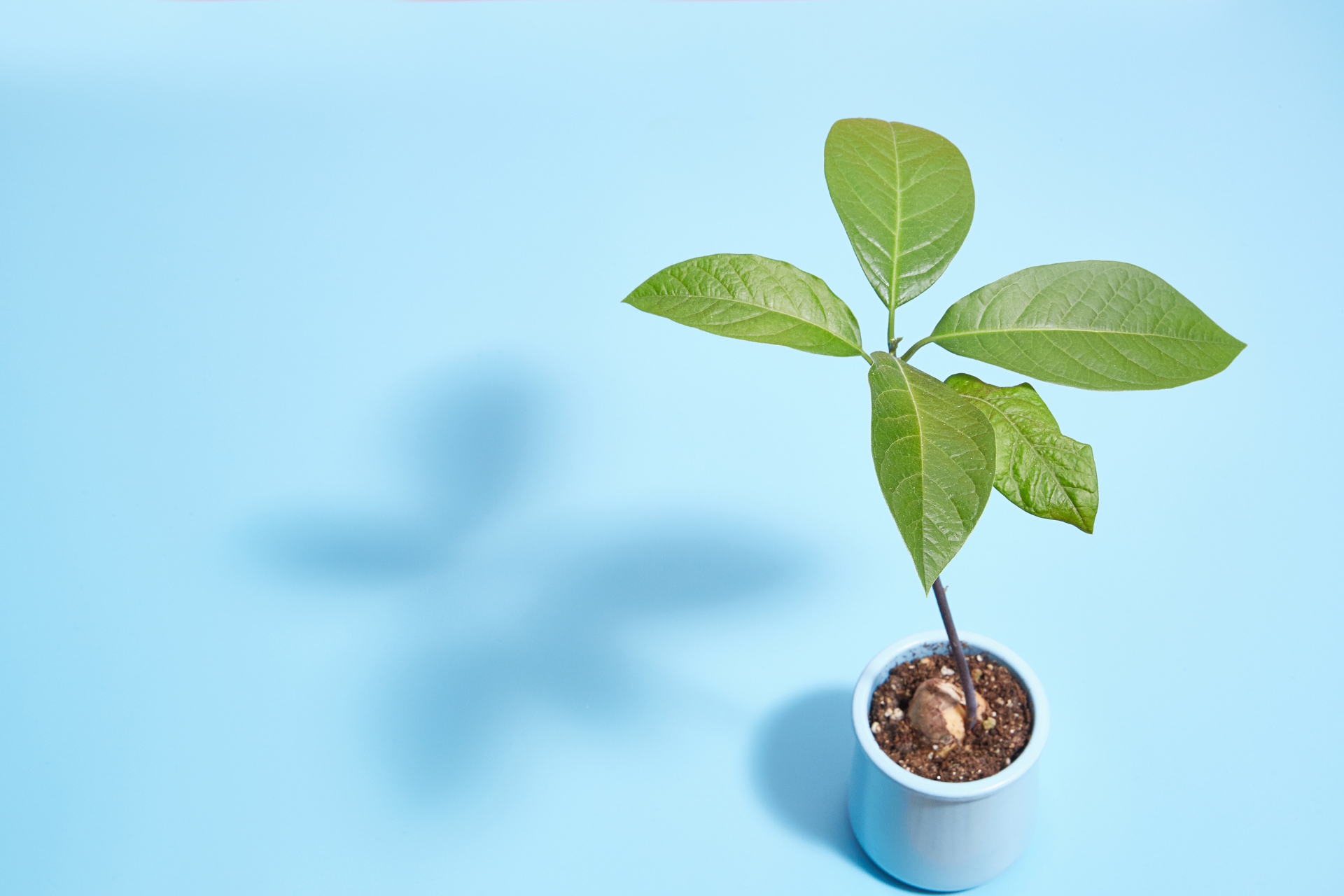
9. Avocado (Persea americana)
Growing avocados in pots is possible with dwarf types like ‘Wurtz’ (Little Cado). They need a large pot, plenty of light, and well-draining soil. They’re slower than others on this list but can still fruit in 2-3 years with good care.
Avocados have sensitive roots that hate standing water. Use a fast-draining mix, and place the pot on bricks or pot feet to allow for proper drainage. They can grow quite tall, so pruning to maintain a manageable height is a must.
Avocados are self-pollinating to a degree, but fruit set is often improved with cross-pollination. If you have space, consider having more than one tree. They benefit from a balanced fertilizer and occasional micronutrient supplements.
10. Calamondin Orange (Citrus x microcarpa)
A hybrid between kumquat and mandarin orange, calamondin trees are compact, fast to fruit, and excellent for pots. They bear heavily and regularly, and their small, tangy fruits are great for cooking and drinks.
Calamondins are among the most decorative fruit trees. They have glossy leaves, fragrant flowers, and brightly colored fruit all at once. They can be grown indoors if given enough light, making them an excellent choice for small-space gardeners.
These trees prefer high humidity, so misting helps when kept indoors. Like all citrus, they are prone to pests like spider mites or scale, so monitor regularly. Repot every 2-3 years or when root-bound.
Container Growing Tips
- Choose the right pot size. Start with at least 10-15 gallons for young trees, upgrading as they grow.
- Use quality potting mix. Avoid garden soil. Use a lightweight mix with perlite or sand for drainage.
- Fertilize consistently. Container trees exhaust nutrients quickly. Use slow-release or liquid fertilizer tailored for fruiting plants.
- Monitor watering closely. Containers dry out faster than ground soil. Check moisture often.
- Prune for shape and health. Pruning keeps trees compact and boosts fruiting.
- Watch for pests. Aphids, scale, and spider mites are common. Neem oil or insecticidal soap works well.
FAQs
Can I grow these fruit trees indoors?
Yes, several of them, like calamondin, lemon, and fig, adapt well to indoor conditions if they get enough sunlight (at least 6 hours). Use grow lights if natural light is limited.
How soon can I expect fruit?
Some trees, like papaya and fig, can produce within the first year. Most will bear fruit within 1-3 years if given proper care.
Do I need to repot regularly?
Yes. As the tree grows, its roots need more space. Typically, you should repot every 1-2 years, or when roots start circling the pot.
What’s the best fertilizer for potted fruit trees?
Use a balanced fertilizer (like 10-10-10) or one formulated for fruit trees. During fruiting, switch to something with more potassium (like 5-10-15).
What if I live in a cold climate?
Choose cold-tolerant species or bring trees indoors during winter. Citrus, fig, and pomegranate can handle light frost, but protect them from deep freezes.
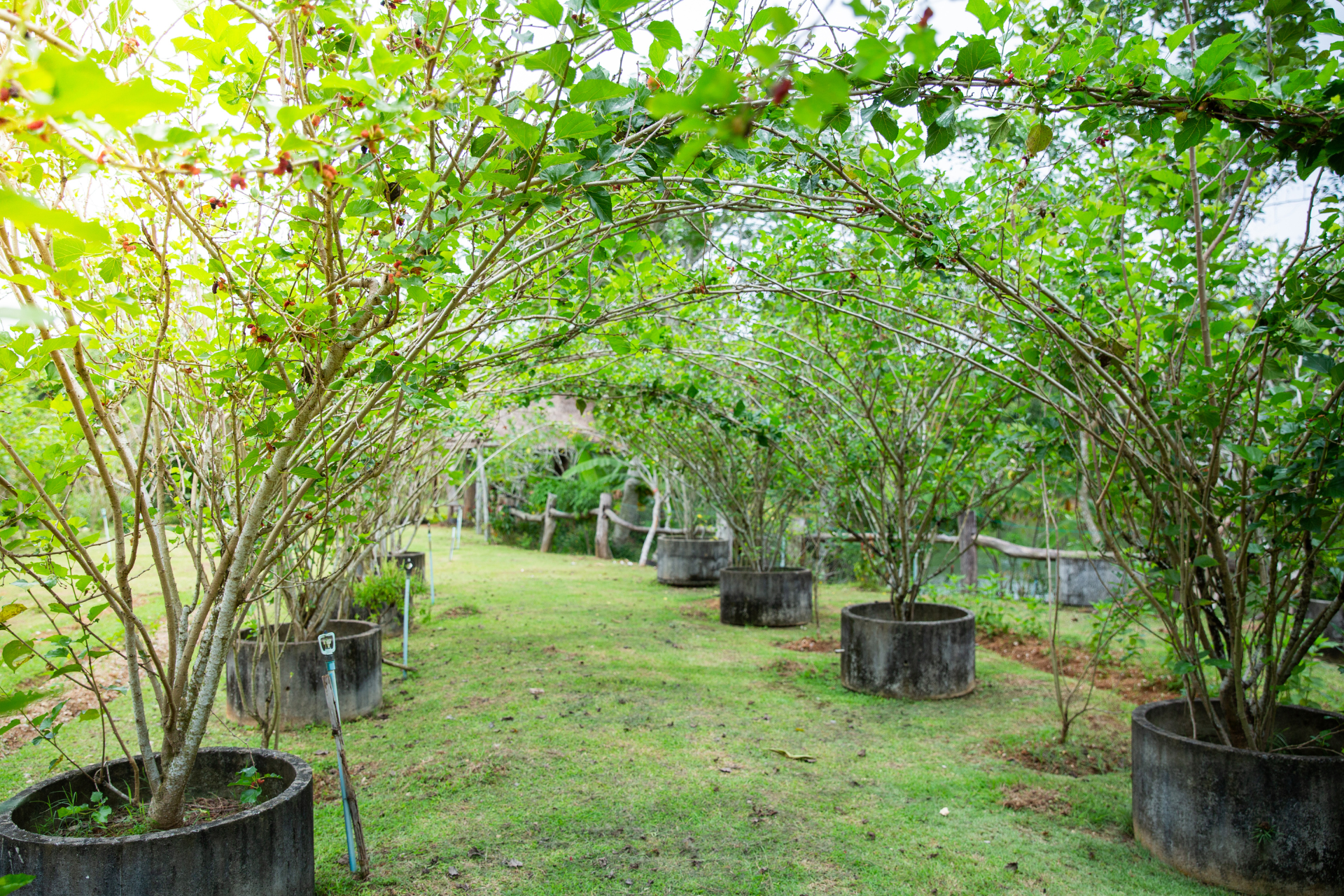
Final Thoughts
Container fruit tree gardening is practical, rewarding, and incredibly satisfying. With the right approach, you can turn even a small balcony into a vibrant orchard. I’ve seen it work for countless people, and it can work for you too. Choose the right varieties, stay consistent with care, and you’ll enjoy fresh, homegrown fruit faster than you think.


